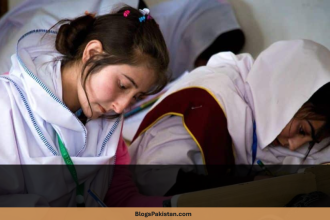Humaira Asghar: When the headlines scream with the names of the famous, it’s not always about glitzy premieres or blockbuster hits. Sometimes, the limelight falls on a tale that’s both tragic and deeply human. This week, Pakistan’s entertainment industry is reeling from the sudden and mysterious death of Humaira Asghar Ali, a talented actor and model whose story has left many questions in its wake.
Who Was Humaira Asghar Ali?
Humaira Asghar Ali’s name resonated with fans of Pakistani television and film. Best known for her appearances on the reality show “Tamasha Ghar” and the popular film “Jalaibee,” she carved out a niche in the notoriously competitive world of entertainment. Her performances were marked by charm, wit, and a vibrancy that inspired those around her—not to mention a growing fanbase across Pakistan and India.
But behind the scenes, life was not always as glamorous as her screen persona suggested.
The Shocking Discovery in Karachi
This week, news broke that Humaira Asghar Ali was found dead in her apartment in DHA Phase VI, Karachi. The discovery was as sudden as it was heartbreaking. What began as a normal Thursday morning for many, ended with a wave of disbelief and sorrow that swept across the nation’s social media feeds.
The family, initially hesitant, received her body from a welfare institution’s morgue after traveling from Lahore to Karachi. The legal formalities, as explained by her brother Naveed Asghar, had to be meticulously followed—a stark reminder that tragedy doesn’t come with a script or a set of easy instructions.
A Family in Grief and a Nation in Shock
For three agonizing days, Humaira’s family was in constant communication with the Karachi police and the welfare institution, trying to navigate the bureaucratic maze that follows unexplained deaths. Their grief was palpable, highlighted when they finally took her body home to Lahore for her final rites.
The initial reports suggested reluctance from the family to receive the body, stoking rumors and speculation on social media. The truth, however, was far sadder: they were simply overwhelmed by the unexpected loss and the legal requirements.
Official Responses and Public Mourning
Sindh’s Minister for Culture, Syed Zulfiqar Ali Shah, didn’t just express sorrow over Humaira’s passing—he offered support, pledging to arrange her burial should the family need help. His words were more than just political protocol; they reflected the government’s acknowledgment of her contributions and the emotional impact her death had on fans and fellow artists alike.
Celebrities and fans across Pakistan and India took to social media to share their grief, memories, and prayers. More importantly, many voices began a critical conversation about mental health, isolation, and the unique pressures faced by those in the spotlight.
A Pattern That Can’t Be Ignored
Less than three weeks before Humaira Asghar’s death, another tragedy shook Karachi’s creative community: the passing of 84-year-old actress Ayesha Khan, whose body was discovered only after neighbors noticed an unusual smell. The similarities in these cases—one in her prime, the other in her twilight years—underscore an uncomfortable truth about urban isolation and the struggles faced by artists who often live far from their families.
Loneliness in the Limelight
It’s easy to assume that fame equals fulfillment, but these recent tragedies tell another story. For artists like Humaira Asghar Ali, the journey to stardom can be lonely, stressful, and sometimes dangerous. The late nights, the pressure to always be “on,” and the lack of a stable support system can take a toll.
In a society where discussing mental health is often still taboo, these incidents are a wake-up call. The spotlight, while dazzling, can also cast long shadows that hide pain and vulnerability.
What Can We Learn?
For fans in Pakistan, India, and beyond, these stories are more than just tabloid headlines. They are reminders to check in on friends and loved ones, especially those who live alone or work in high-pressure environments. The entertainment industry, for all its glamour, is still made up of people—people who need connection, understanding, and support.
The government and welfare institutions stepped up in Humaira Asghar Ali’s case, but real change requires a broader societal shift. Only by breaking the silence around issues like mental health, loneliness, and the pressures of fame can we hope to prevent more tragedies like this.
The Role of Media and Community
In the aftermath of Humaira’s death, the media has a vital role to play. Instead of rampant speculation or sensationalism, responsible coverage can highlight the importance of mental well-being and the value of community support.
For fans, it’s a chance to remember Humaira Asghar for her talent, warmth, and humanity—not just the circumstances of her passing.
Moving Forward: A Call to Action
As investigations continue and the entertainment fraternity mourns, the bigger question remains: how do we support those who bring light and laughter into our lives, even as they struggle in silence?
Let’s start by fostering a culture where reaching out for help is seen as a sign of strength, not weakness. Let’s build networks of care both online and offline, and ensure that no one—famous or otherwise—has to face their darkest moments alone.
Conclusion
Humaira Asghar Ali’s story is one of ambition, artistry, and ultimately, tragedy. While her loss is deeply felt, it can also serve as a catalyst for change. By learning from her life and honoring her memory, we can build a kinder, more connected world—one where the spotlight illuminates hope as much as heartbreak.










